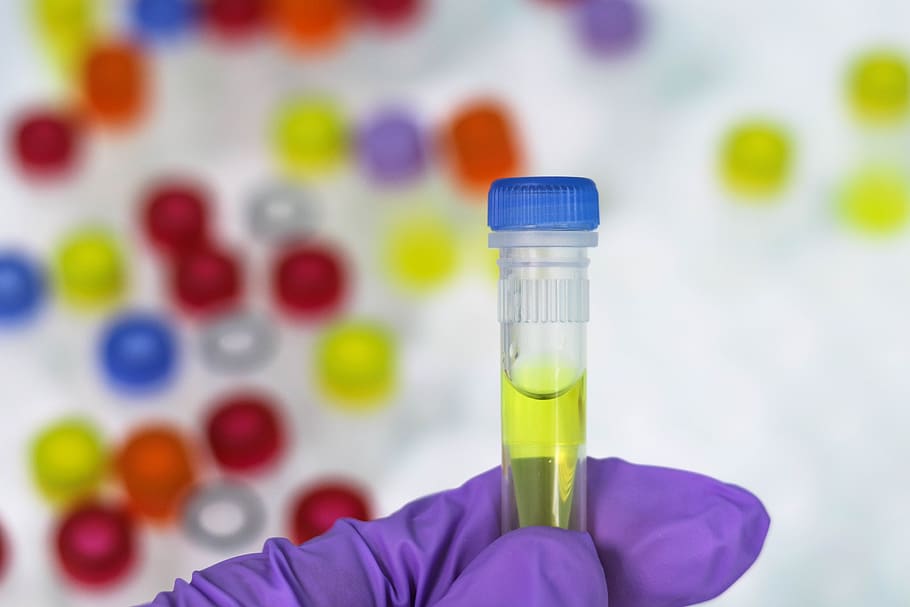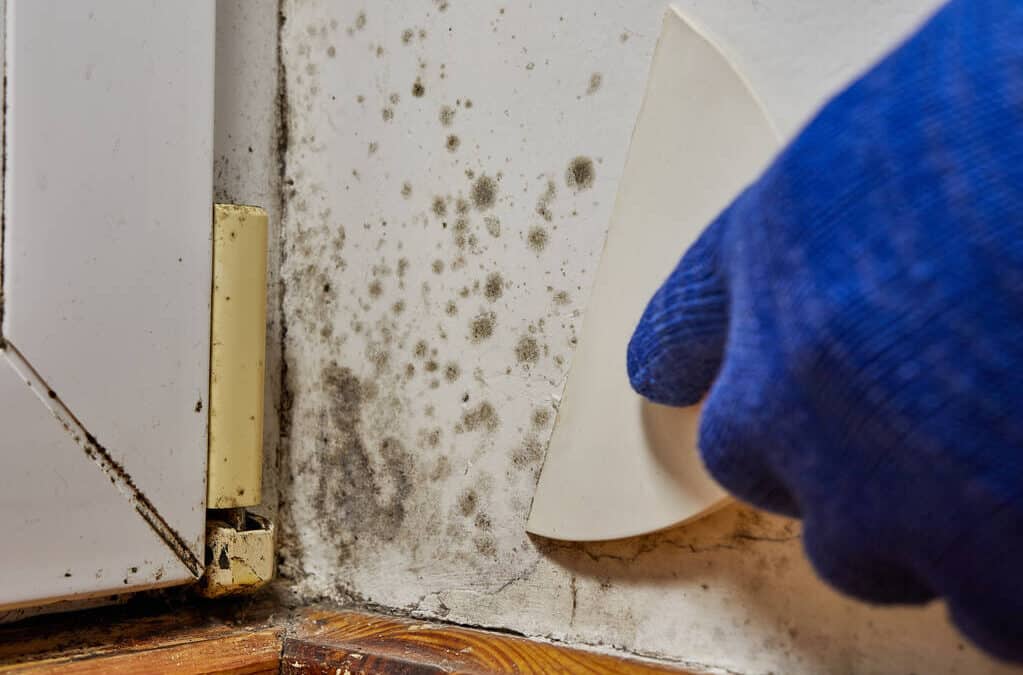
What’s the Difference Between Cleaning, Sanitizing, and Disinfecting My HVAC System?
HVAC and other duct-based systems are frequent sources of mold owing to their humidity.
Given moisture’s foundational role in allowing fungal growth—and your HVAC system’s ability to spread its spores throughout your house—eliminating sources of moisture should be a priority.
As such, all HVAC systems must be thoroughly cleaned and sanitized. While many opt for wiping down dust with soapy water, this method can only clean surface mold, at best. Read on to learn more about disinfecting your HVAC system.
Materials You’ll Need to Sanitize Your HVAC System

We’re not leaving things up to chance. Properly sanitizing your HVAC system requires the right cleaning solutions as well as the right protective gear—to prevent you from exposure and the further spreading of mold spores.
As such, you’ll want to purchase the following cleaning materials before you begin:
Wet vacuum (or HEPA-based dry vacuum)
EPA-registered disinfectant rated for working on non-porous surfaces
Mold and mildew inhibitor
Face mask
Protective eyewear
Scrub brush
Latex gloves
How to Properly Disinfect Your HVAC System
Before you begin your sanitizing journey, you’ll want to make sure you protect yourself from mold exposure.
Then, follow these steps:
- First, turn Your HVAC system off.
- Examine with a flashlight to understand the scope of the problem; look out for visible dark spots or fuzzy growths, and check for stale or moldy-smelling air.
- Remove and replace any wet porous duct materials like filters and insulation.
- Clean HVAC evaporating coils using a mechanical coil cleaning system
- Mix and apply cleaning solution to the HVAC system (pay attention to the proper water-to-solution ratio on the mold remover)
- After your ducts have been cleaned, apply a mold and mildew inhibitor to every HVAC system component
- Finally, use your wet vacuum or HEPA-based dry vacuum.
How Often Should Sanitizing and Disinfecting Be Done?

You should completely sanitize and disinfect your HVAC system every two to three years, even if you don’t have any mold. It’s not a hard and fast rule, though. Depending on your climate, environmental humidity, and flooding, you may need to disinfect sooner.
Keep Mold at Bay by Keeping Moisture Under Control
Mold needs three things to live: moisture, food, and heat. By maintaining the right humidity levels—and quickly addressing any large spills or water damage—you can prevent the conditions mold needs to thrive.
Why MoldGone
At MoldGone, we offer FREE mold inspection. Our mold removal and mold remediation services are available at reasonable prices. Call us today at 240-970-6533 or Click here to schedule your appointment.

Like dieting, conspiracy theories, and reproductive health, much of what we know about mold has been infected with misinformation.
To keep the public informed, we’re devoting some time to clear up misconceptions about mold, its health impacts, viable mitigation strategies, and more!
Myth #1. If You Suspect Mold, Buy a Mold Test ASAP
If you’re worried about mold infesting your home, just nab a test kit, right? Unfortunately, not. At-home mold tests are sadly not reliable. Since mold is present in every home—at various concentration levels—mold testing kits frequently result in false positives. In reality, only high concentrations of mold are dangerous. Professionals all over the air quality industry recommend against using them. What other ways are there to identify mold?
- Visible stuff includes visible discoloration on walls and ceilings, stains in cracks and crevices
- Exceptionally humidity levels (above 50%)
- condensation forming on cold surfaces
- A noticeable smell of rotten vegetables
Myth #2. Use a Vacuum Cleaner Directly on Mold-infested Surfaces

Still, vacuums with HEPA filters work as excellent tools for cleaning up mold-infected areas after a full-scale mitigation.
Myth #3. All Mold is Dangerous — Or Mold Isn’t Harmful
While there’s some dispute about the precise danger of mold, it’s been well-documented as having serious effects on those with allergies or compromised immune systems. The average person won’t react as strongly to low and moderate levels of mold but it can cause significant and severe symptoms in high enough quantities. As such, it’s always best to urgently address any ongoing mold or moisture problem.
Myth #4. A Little Mold is Not a Big Deal
Not exactly. A small mold patch often indicates a deeper mold issue, if not an underlying problem with excess moisture. Since mold grows so rapidly, you may be seeing the beginning of a new infestation or a small part of a larger hidden infestation. Either way, it’s an urgent problem that grows more serious with time.
Myth #5. Bleach is an Effective Home Remedy
Bleach can kill mold on the surface, but it’s not up to the task of getting to the mold’s deeper roots, which are often buried in porous materials. If applied, bleach will get rid of surface mold, however, it’s likely to come back without more thorough remediation.
Myth #6. You’ll Know if You Have a Mold Problem

Most discover mold due to its aforementioned rotten vegetable smell or through discovering an area of the home that contains leaks or unusually high humidity. If you’re worried about mold infecting your home, be sure to inspect the following areas regularly:
- Window sills
- Basements
- Piping and plumbing (inspect for leaks and excess condensation)
- Around water-based appliances
- Bathrooms
- Attics/crawl spaces
- Laundry room (ensure your dryer is properly vented outside properly)
Mold May Be a Mystery, But Mold Remediation is Not
More than 100,000 kinds of mold exist in the world; there’s still so much we don’t understand. That said, by learning it’s physical needs and properties, as well as managing your home’s moisture levels, you should be able to stay ahead of any future mold infestation.
Why MoldGone
At MoldGone, we offer FREE mold inspection. Our mold removal and mold remediation services are available at reasonable prices. Call us today at 240-970-6533 or Click here to schedule your appointment.


Recent Comments